This was published 2 years ago
‘It’s a terrible syndrome’: What’s with our love of international ‘starchitects’?
With rare exceptions, Australia still prefers “starchitects” from abroad to take the lead on new public buildings. Globalisation at work – or cultural cringe on a grand scale?
By Nick Bryant
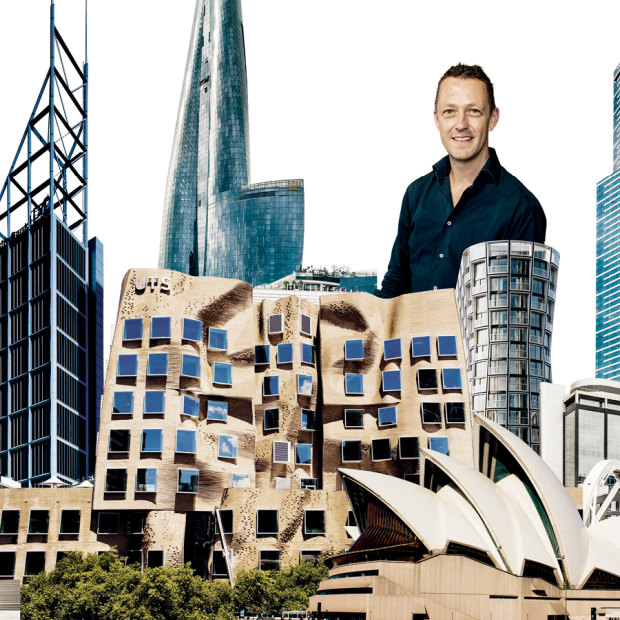
Landmarks designed from near and afar: at left, local architects Durbach Block Jaggers’ North Bondi surf club; centre: Canadian American Frank Gehry’s UTS building. Australia’s “cultural cringe” – a phrase coined in 1950 – is still evident seven decades on, say local architects Angelo Candelapas. left, and Adam Haddow, centre, and architecture lecturer Peter Raisbeck, right.
When the Danish architect Bjarke Ingels arrived at the Melbourne School of Design in 2018 during a rare visit to Australia, students greeted him as if Lady Gaga had walked through the door. Many of his admirers wanted to digitally document this moment with a selfie. Some wore black T-shirts and black horn-rimmed glasses in homage to a 40-something who still revels in the moniker of the “bad boy” of international architecture.
No “starchitect” on the planet understands the requirements of the attention economy better than this photogenic Dane, who, along with a brief cameo in Game of Thrones, has a string of showy creations to his name – from the pyramidal apartment building, VIA 57 West, overlooking the Hudson River in Manhattan, which resembles a silver blade slashing through Hell’s Kitchen, to the elegantly sculptured energy plant in his home city of Copenhagen, which features a ski slope on its roof.
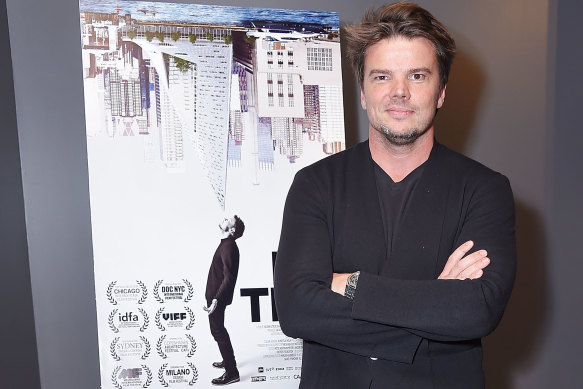
Danish architect Bjarke Ingels commands rock-star status among local design students.Credit: Getty Images
His celebrity has helped bring a swag of high-profile commissions and also the adoration of a new generation of young designers, including those who mimicked the Ingels mien in Melbourne. “Everyone looked like gangsters on a Eurovision set,” complained lecturer, author and architectural blogger Peter Raisbeck, after watching his students go weak at the knees. “I wanted to puke.”
Ingels was in town for the competition to construct a $2 billion skyscraper in Melbourne’s Southbank. The Dane had proposed what would become Australia’s tallest building, a characteristically “look at moi” structure with multi-storey gaps in the body of two interlocking towers that he described as vertical laneways. A “lane-scraper”, he dubbed it, in an ingratiating nod towards the city’s much-loved labyrinth of back streets.
The Bjarke Ingels Group – or BIG, as it is more commonly known – was one of six international practices shortlisted for the Southbank project by property
developer Beulah International. Some of Australia’s leading architects participated as well. However, rather than being allowed to submit their own designs, all the local firms had to team up with an “international”, as these fly-in, fly-out practices are known in the trade.
BIG collaborated with Fender Katsalidis Architects, something of a comedown for a Melbourne powerhouse practice that had already designed Southbank’s two most distinctive skyscrapers, the Eureka Tower and Australia 108, as well as Hobart’s famed Museum of Old and New Art.
In the end, UN Studio, a celebrated Dutch practice that proposed a “green spine” of vertical platforms, verandas and terraces intended to look like geological layers, won the competition. It had teamed up with Cox Architecture, the firm behind the redeveloped Adelaide Oval, Optus Stadium in Perth and a string of Sydney landmarks, including the National Maritime Museum and the now demolished Convention and Exhibition Centre. For a high-profile project on home turf, this Australian giant was also forced into the supporting-actor role.
Like the sycophancy of his students towards Bjarke Ingels, the laudation of the big international practices makes Peter Raisbeck, an associate professor in architectural practice at the Melbourne School of Design, want to vomit. “I hate the starchitects,” says Raisbeck, whose 2019 book, Architecture as a Global System: Scavengers, Tribes, Warlords and Megafirms, aimed a wrecking ball at their worldwide omnipresence. “They send the wrong message that architecture is all about icons and symbols. Some are obsessed with their social media profile and media images.”
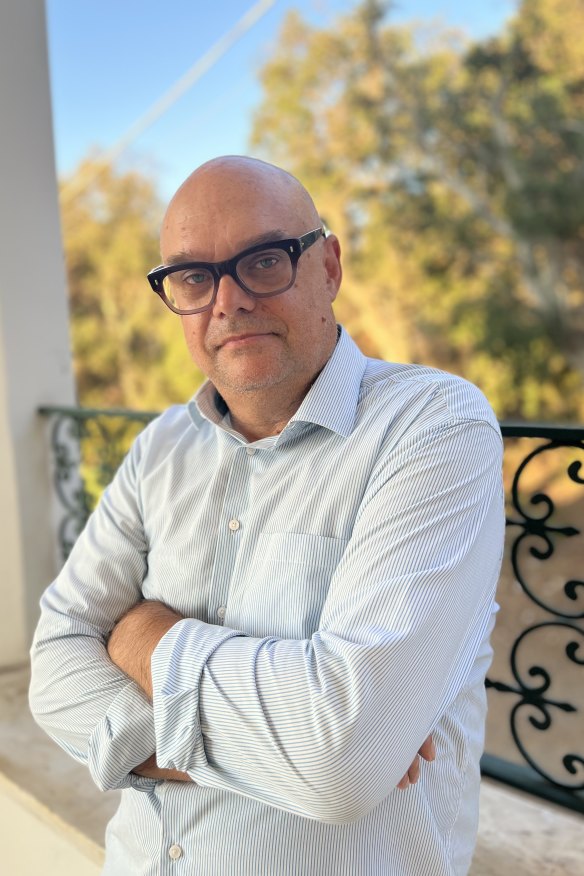
Associate professor Peter Raisbeck: “Australian architects are as good as any architects in the world, if not better. We would be better off without the star system.”
Design competitions, like the Beulah Southbank project, only fuel their fame to the detriment of homegrown talent. When the South Australian government held a competition to design a new Adelaide Contemporary art gallery, for example, it also insisted that local practices team up with international stars.
These included David Adjaye, the Briton who’s been described as Barack Obama’s favourite architect; Diller Scofidio + Renfro, the New York practice behind the High Line; and, inexorably, Bjarke Ingels. Some of Australia’s strongest outfits, such as the Sydney firm, Durbach Block Jaggers, which designed the surf lifesaving club at North Bondi and the distinctive Omnia tower across from the Coca-Cola sign in Kings Cross, were again relegated to subordinate roles, the plus-ones of another talent contest.
Local architecture is hobbled still by cringe-thinking, that “disease of the Australian mind” identified by A.A. Phillips in his seminal 1950 Meanjin essay, that led people here to believe “that the domestic cultural product will be worse than the imported article”. More than 70 years later, that phrase still finds an echo on the building sites of Australia, and, more crucially, in the halls of government and the boardrooms of property developers, where decisions about the built environment are made.
“Australian architects are as good as any architects in the world, if not better,” says Raisbeck. “They’re better than the architects in Britain or America. We could get a better outcome with local architects. We would be better off without the star system, and the bowing-down and kowtowing it involves.”
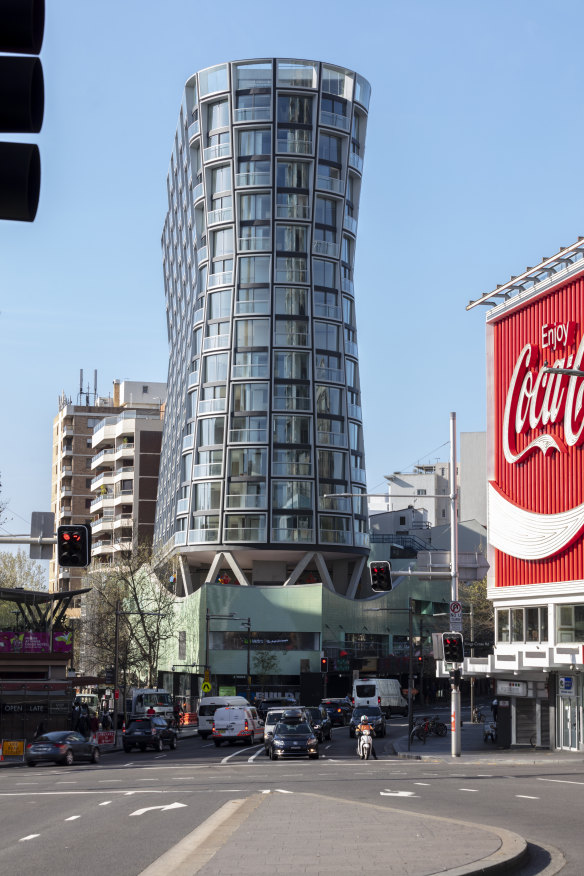
The Omnia Tower in Kings Cross, designed by Sydney firm Durbach Block Jaggers.Credit: Anne Susskind
Just take a walk along the shoreline in the heart of Sydney, prime Emerald City real estate, where so many high-profile developments have been entrusted to global firms. At Barangaroo, the UK practice RSHP, which was founded by Richard Rogers, one of the architects behind the Pompidou Centre in Paris, designed its largest building, a trio of skyscrapers. Next door is another threesome of towers, designed by the Italian Renzo Piano, Rogers’ partner on the Pompidou and the creator of The Shard in London.
British firm WilkinsonEyre designed the new Crown Sydney casino and hotel, or “Packer’s Pecker” as it has come to be unaffectionately known – even though it reminds some of a giant vulva thrusting skywards. The London practice of Norman Foster, a high-priest of high-tech, is behind Salesforce Tower, the new skyscraper at Circular Quay which was inspired by structural stress diagrams.
“We always think of people from ‘not here’ as doing a better job,” says Adam Haddow, of the Sydney practice SJB. “We genuflect. We think that they’re somehow more special. Culturally, we were taught to respect people with an accent different to ours.”
What makes the architectural cringe all the more insulting is the long-held complaint locally that some international firms have given the impression of dialling it in with respect to their Australian designs. Frank Gehry’s building at the University of Technology Sydney, which resembles a stack of bricks collapsing in on itself, might qualify as his worst contemporary work.
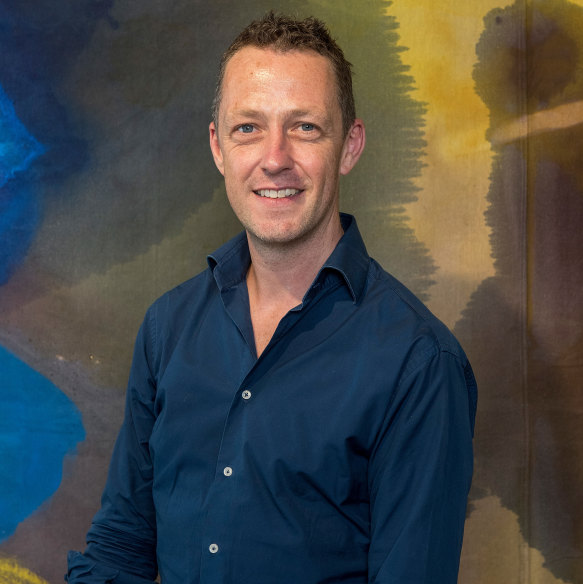
Sydney architect Adam Haddow says the attitude is to consider people from “not here” as “more special”.Credit: Jesse Marlow
Likewise, Norman Foster’s finest buildings are not to be found in the southern hemisphere. Though his Deutsche Bank Place, with its triangular skeletal superstructure, is a welcome addition to the cityscape (and would have been even more successful had Foster’s original vision for roof gardens amid the steel supports been realised), a more recent Sydney project, a duo of towers on Broadway that references the art deco pub which they now overshadow, looks generic and lazy, an architectural equivalent of muzak.
“We get a lot of their C-grade product,” argues Haddow. “There’s a fantastic moment when an international reveals your culture better than you can. And then there’s that moment when they do something that’s out of sight on the other side of the planet.”
International successes are often a bittersweet tale. Take Renzo Piano’s Aurora Place on Phillip Street in Sydney, which, with its rooftop referencing the nearby Opera House, is arguably the city’s most successful tall building. But it stands on ground once occupied by the State Office Block, which was once Australia’s tallest skyscraper and among its most striking modernist buildings.
When “the Black Stump” was demolished in the 1990s, its architect, Ken Woolley, likened it to “scraping the paint off a Whiteley to provide a canvas on which to paint a Hockney”. The self-destructive power of the Australian architectural cringe had helped reduce a postwar classic to rubble.
Not all our major projects are going to overseas architects. To design its new contemporary art gallery, the largest on Australian soil, the National Gallery of Victoria insisted on a closed competition in which only home-grown practices could participate. From those entries it selected one of this country’s most impressive architects, Angelo Candalepas, whose recent body of work includes an exquisite mosque at Punchbowl in Sydney.
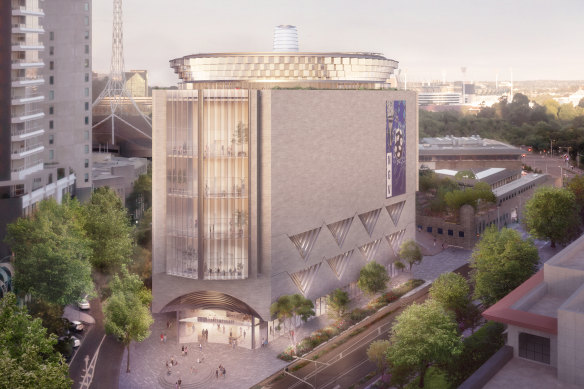
Australian architect Angelo Candalepas’ winning design for NGV Contemporary.Credit: Darcstudio.
Candalepas has also been chosen to design a new building overlooking Hyde Park in the centre of Sydney, which draws inspiration from the art deco of the ANZAC Memorial, and to redevelop a tower in Hyde Park South. On the first project, he is collaborating with Glenn Murcutt, Australia’s sole recipient of the profession’s highest honour, the Pritzker Prize – a green-and-gold dream team.
All too often, says Candalepas, local architects have been disregarded. And all too often, global rivals have not brought their A-game to Australia. “Many international architects are not invested in the work they do in these places,” he tells me. “It’s a terrible syndrome. They’re designing on a plane. They’re not revelling in the dirt. They have no childhood memories. They have no appreciation of the harbour, or of how the sun casts its shadows.”
“They’re designing on a plane. They’re not revelling in the dirt. They have no childhood memories. They have no appreciation of the harbour, or of how the sun casts its shadows.”
Candalepas, who was born in Sydney and trained at UTS, has a lifelong understanding of the vagaries of the local climate, the possibilities and limitations of native building materials, and the nuts and bolts of building in what are often restricted urban environs. Inevitably, fly-in, fly-out architects do not share that sense of place or belonging.
“The work is not great,” he says, without naming marquee names. “It becomes a trademark. It’s a product. It’s architecture as merchandise. It’s about the way things can be marketed. We are often totally disregarded in competitions, and I don’t think that’s fair.”
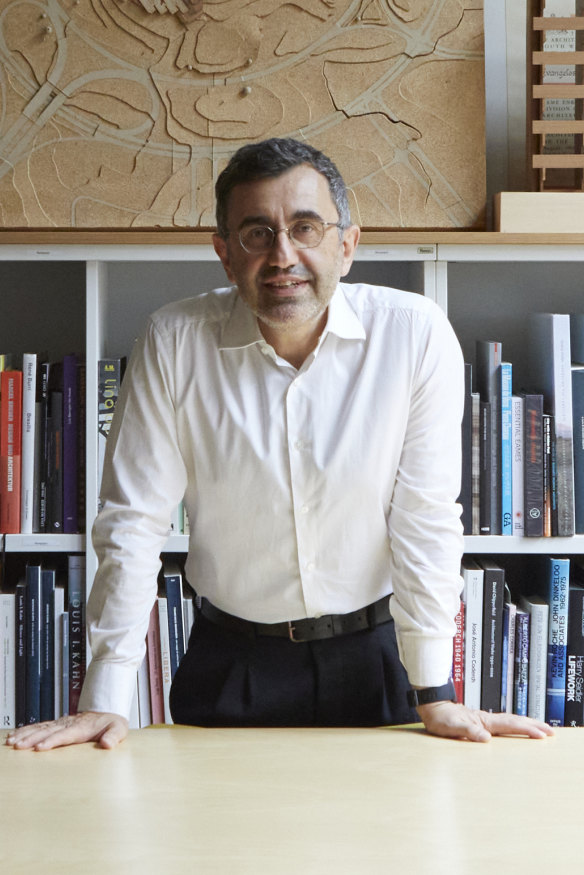
Locals are often “totally disregarded” in design competitions, says Australian architect Angelo Candalepas. “I don’t think that’s fair.” Credit: Martin Mischkulnig
Federation came with the expectation that the newly forged nation would produce a distinctive architectural aesthetic: an Australian style. It would stem, wrote the British-born designer Robert Joseph Haddon in his 1908 textbook, Australian Architecture, from the “points of peculiar difference that will always separate our Australian requirements and practice from that of the old world”.
These “points of peculiar difference” included the climate, local building materials, and what he called the “requirements of life, business and habit differing in many degrees from the old civilisation”. The new world, in other words, would produce a new architecture distinct from the derivative nature of most of Australia’s colonial landmarks, a mishmash of the classical, Romanesque and Gothic.
In the decades afterwards, however, European and American influence remained pervasive. Federation architecture, which flourished from the 1890s to the outbreak of World War I, borrowed heavily from art nouveau and the British Arts and Crafts movement. In the years between the world wars, art deco, another import, became the dominant style.
Neither were Australia’s new landmarks unequivocally Australian. The Sydney Harbour Bridge, the fledgling nation’s most ambitious construction project, was conceived and overseen by a local engineer, John Bradfield of the NSW Department of Public Works. Yet a British firm, Dorman Long, played a large role in its design and construction. Magnificent though The Coathanger doubtless was, it was essentially a scaled-up reversioning of the Tyne Bridge in Newcastle, Britain and the Hell Gate Bridge in New York City.
Likewise, when the federal government built its new bush capital in Canberra, it outsourced the design. The international competition was won by the American husband-and-wife team of Walter Burley Griffin and Marion Mahony Griffin, acolytes of the American maestro Frank Lloyd Wright. The die was evidently cast. Nation-defining projects required foreign expertise. History even repeated itself in the 1970s when the competition for the new parliament house, which drew more than 300 entries from 29 countries, resulted in victory for Romaldo Giurgola, an Italian-born architect who headed up a US-based firm.
In the postwar years, as the pursuit of that elusive Australian aesthetic continued, it did not help that Harry Seidler became the country’s most influential architect. Austrian-born and Harvard-educated, Seidler was taught by Walter Gropius, the German-American founder of the modernist Bauhaus School, and served his apprenticeship alongside some of the giants of the profession, including Brazilian Oscar Niemeyer, Hungarian Marcel Breuer and Fin Alvar Aalto. With his first Australian commission, a residence on Sydney’s upper north shore that he designed in 1948 for his Jewish immigrant family, Seidler implanted European modernism on Australian soil.
Thereafter, as his office buildings altered the skylines of Sydney, Brisbane and Melbourne, he was widely credited with bringing international architecture to Australia rather than showcasing Australian architecture to the world. Seidler was untroubled by this. After all, the search for a “‘uniquely Australian’ mode of design”, he once argued, had produced some awful buildings, while the parochialism of local architecture schools engendered a “paranoid attitude towards anything ‘imported’ ” .
Then, in the late 1950s and ’60s, came the most cringeworthy moment of them all: the troubled construction of what instantly became Australia’s most spellbinding building, the Sydney Opera House, designed by the Danish master, Jørn Utzon. The sorry melodrama that clouded its completion, which involved Utzon’s constructive dismissal in 1966 and his shunning of Australia thereafter, inflicted further psychic harm on the local industry. Compared to the splendour of Utzon’s shell-shaped roofline, the interiors, designed by the Sydney architect Peter Hall, were uninspiring.
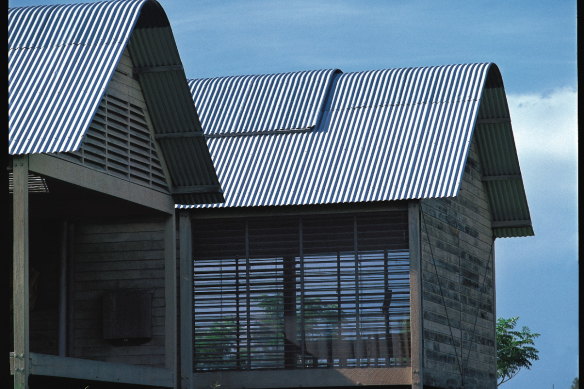
Australian architect Glen Murcutt’s iconic Marie Short farmhouse near Kempsey, NSW.
Happily, the 1970s were more fruitful when it came to the flowering of local talent, which reflected a broader Australian cultural awakening. In 1975, Glenn Murcutt completed his seminal homestead, the Marie Short farmhouse near Kempsey, NSW. This helped Australian residential architecture establish a global reputation. Organic architecture, that touched the ground lightly and dissolved the boundaries between interiors and exteriors, finally established a unique aesthetic. Stunning coastal and country properties became a staple of coffee-table books, those weighty certificates of international acclaim.
“Australian architects are starting to learn from the Australian architects that have come before them. We’re not teenage any more.”
Decades on, Australian architecture has never been stronger. Major firms, such as the Melbourne-based Denton Corker Marshall, have made their global mark. Medium-sized practices, such as Durbach Block Jaggers, John Wardle Architects and this year’s Australian Institute of Architects gold-medal winner, Sean Godsell, have entered the worldwide premier league.
Moreover, an indigenous style is not just recognisable in residential architecture, but major urban projects as well. It has benefited from a rich ancestry of practitioners, who, over the past four decades, have firmly established an architecture of place. “There’s a clearer lineage,” says Adam Haddow. “Australian architects are starting to learn from the Australian architects that have come before them. We’re not teenage any more.”
Still, though, Australia remains starchitect-struck. The Lucky Country remains a treasure island for the internationals. “We’re flattening out our cultural identity,” says Haddow. “We’re diluting what makes us different.“
No longer is this purely a cultural issue, claims Craig Allchin, an architect and urban designer. The preference for outsiders is more a question of commercial necessity. Big, city-shaping projects involve such vast sums of money that developers need the pulling power of global practices to attract tenants and investors.
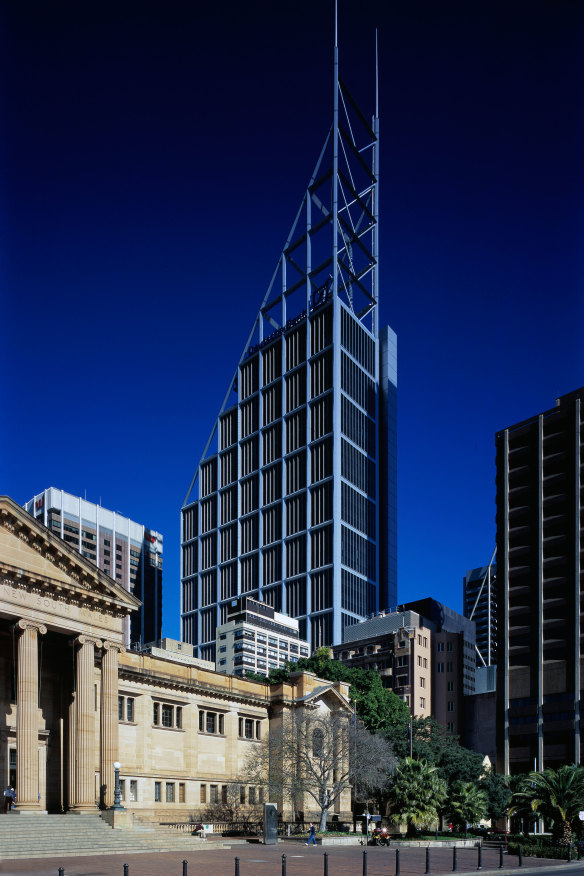
British architect Norman Foster’s Deutsche Bank Place in Sydney. Credit: Alamy
And when it comes to the bottom line, big names have a proven track record. When Norman Foster’s Deutsche Bank Place opened in 2005, for example, it was almost 100 per cent leased. “It’s really about reducing the risk of the capital,” says Allchin. “International firms have such safe global brands. The driver for this isn’t really design. It’s not a cultural-cringe thing any more. It’s got more to do with globalisation and the implications of global capital.”
Local practices, then, are confronted with a confounding catch-22. “Developers want you to have done a big building in order to do a big building,” complains Haddow. Instead, the top end of town needs to place more commercial faith in grassroots firms. “Developers and institutions should be braver so that smaller practices can grow,” says Peter Raisbeck. “It shouldn’t be about picking the same old, same old.”
Sometimes foreign countries have been more inclined to entrust high-profile projects to Australian firms. After the success of its Civil Justice Centre in Manchester, widely acclaimed as the most elegantly designed court building in Britain since Victorian times, Denton Corker Marshall got to build the visitor centre at Stonehenge. At the Beijing Olympics, the Sydney-based PTW Architects won the international competition to design the aquatic centre, the popular Water Cube. In all, seven major Olympic venues there were designed by Australians, arguably making those games a better showcase for Aussie talent than the Sydney games eight years previously.
The Fortress Australia mentality during the pandemic helped local
architects, for the simple reason that it was so much more difficult to travel here. The City of Sydney, partly in response to COVID-19, re-engineered the rules governing its competitions in ways that have encouraged local practices to go it alone. The NSW government also appears to be more amenable to local architects when it comes to high-profile projects.
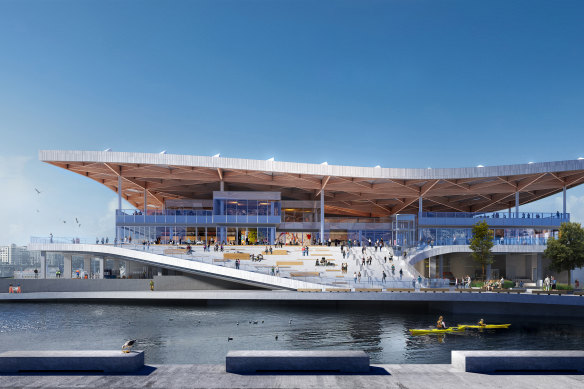
An artistic render of Danish firm 3XN’s design for Sydney’s new fishmarket.
A positive sign came when the talented husband-and-wife team at Collins and Turner, a Sydney firm, won the competition with Aspect Studios to design the new bike ramp for the Sydney Harbour Bridge. Even though their design violated the competition brief, their local knowledge helped win the day.
“Our team, including Indigenous collaborators Yerrabingin, know the harbour and bridge intimately,” says Penny Collins, “and we disagreed with the reference design in the brief and proposed a less obtrusive design. It was a risk, but we felt so passionately about it that we ran with that chance of losing. The runner-up scheme engineered by Ney and Partners from Belgium was elementally beautiful, but perhaps because it was designed from afar, it did not contend with the site-specific challenges.”
This sense of place – an appreciation of Indigenous history and the custodial and cultural issues it raises – has now become an elemental part of competition briefs. “It’s harder for the international firms to establish that connection to country,” says Craig Allchin. “The local firms understand that better, and the more sophisticated international practices appreciate that. So local architects are shaping designs more.”
Nor are starchitects being given free rein. Melbourne rejected the Apple Store that Foster and Partners designed for Federation Square, a temple-like franchise structure that looked like it belonged in China rather than Victoria. Still, the debate that swirled around the project underscored the reverence in which figures like Foster are held.
“To have a Foster and Partners-designed building here is something that we should applaud, not denigrate,” pleaded then state Labor senator Philip Dalidakis. “It is something we should embrace, not eschew. It is something that we should get up and sing from the rooftops about.”
Not all such output is of humdrum quality, of course. Sydney Modern, the new extension at the Art Gallery of NSW designed by SANAA, the Japanese firm headed by Kazuyo Sejima and Ryue Nishizawa, looks set to be an exciting new addition. The Danish firm 3XN has come up with a beautiful design for Sydney’s new fishmarket – maybe there is something about harbourside locations that bring out the best of Scandinavian design.
In fairness to the international firms, sometimes their work ends up being dumbed down by local developers, which construct clunkier “value engineered” versions of their designs. Barangaroo is a case in point. The early drawings from the Rogers team were more refined and eye-catching than the final product.
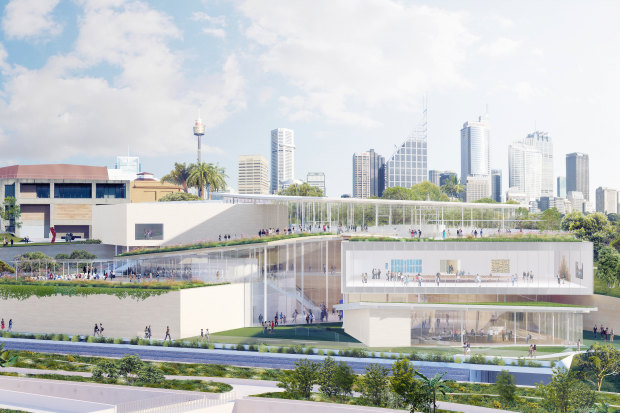
Artist’s impression of Sydney Modern, the new extension at the Art Gallery of NSW, by Japanese firm SANAA.Credit: SANAA
The educational ecosystem of Australian architecture may also be placing constraints on its ability to pull off grand designs. Understandably, many students and young architects seek to emulate the “touch the ground lightly” philosophy of greats such as Glenn Murcutt and Peter Stutchbury, with its emphasis on small-scale projects. Skyscrapers come with a heavier footprint. Here, then, there is a tension. Glenn Murcutt, the architects’ architect, is the perfect human antidote to the modern-day scourge of the starchitect. But maybe his design philosophy encourages the bijou rather than the big.
Surely it would help if Australia reconsidered the story it tells itself about its national architectural heritage: one that departs from making heroes of foreigners, such as Jørn Utzon, and villains of locals such as Peter Hall, who replaced him. On this front, the recently published Australian Architecture: A History by Davina Jackson is a timely intervention, for it sets out a refreshingly revisionist storyline. It focuses, for example, on how some of the world’s first flat-roofed buildings, the precursors of the modernist movement, were built at the start of the 1900s on Sydney’s north shore, and how the Queenslander house, which touched the ground lightly, created something of an early Australian style.
“People don’t realise how impressive Australian architecture has always been to sophisticated foreign visitors,” Davina Jackson tells me. “In the early 20th century, some of our leading architects were way ahead of the international mainstream on building towers with reinforced concrete, and some of the world’s first modernist flat-roofed houses.” Any storyline that subverts the sense of cultural inferiority, and helps cure that degenerative disease of the Australian mind, surely has to be welcome.
Even without revisiting the past, developers and planners will hopefully come to recognise that the future belongs to the home-grown talent of the here and now. Australia can boast more than a dozen or so world-beating practices, which are producing stunning work.
“No one is a prophet in their own land,” sighs Angelo Candalepas, who is on such an upward trajectory right now that he could easily catch the eye of the Pritzker judging panel. “Whenever I go overseas, people are fascinated by Australians.” Now is surely the moment for the same kind of recognition at home.
To read more from Good Weekend magazine, visit our page at The Sydney Morning Herald, The Age and Brisbane Times.